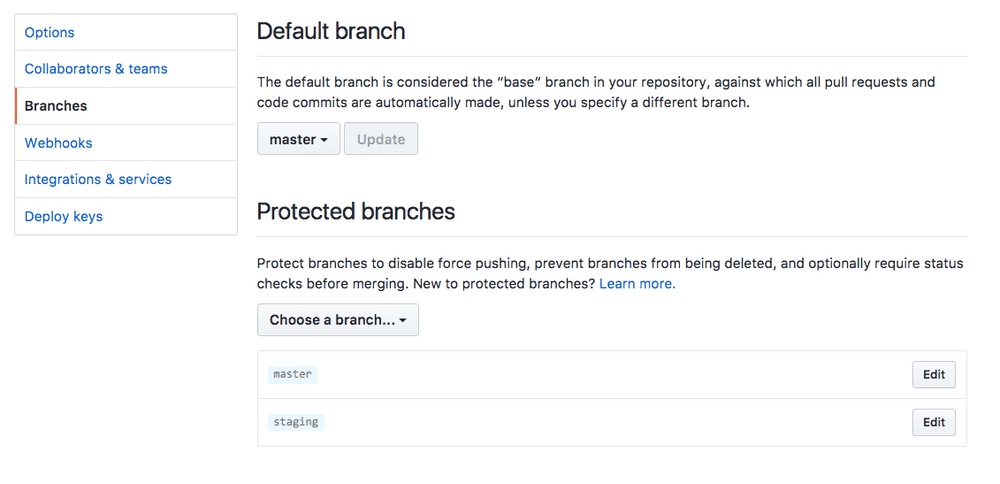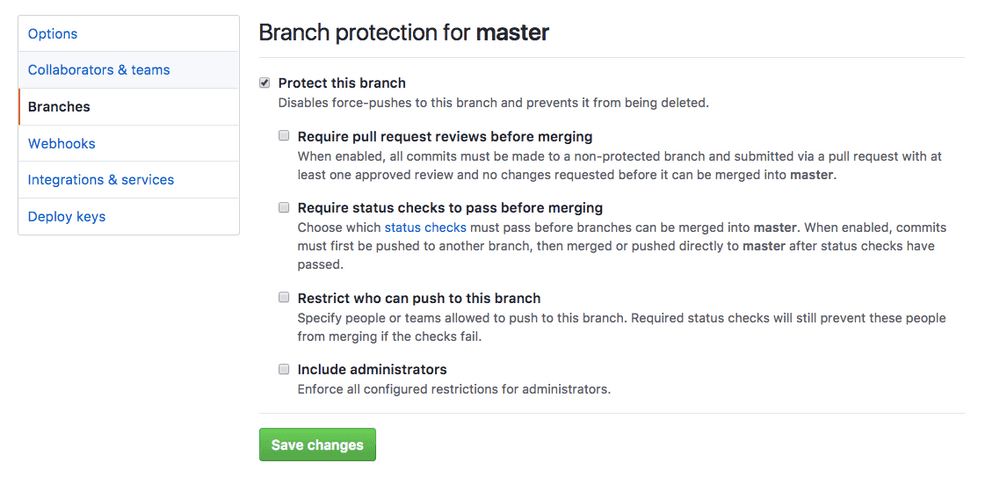How to completely replace git branch code with another branch's code
 Photo by Leo Rivas-Micoud on Unsplash
Photo by Leo Rivas-Micoud on Unsplash
At work recently, our CTO noticed that our main repository’s staging branch had over 80 less commits than master. That shouldn’t be the case, because our deployment pipeline has always been to go from feature -> staging -> master. Code that exist on master must therefore already exist in staging, right?
No, turns out nothing was really wrong. It’s just that whenever we close a pull request (PR) on GitHub, our team protocol is to hit the “Merge” button, which merges all the commits from the PR into master, but not without adding one extra commit at the top called the “merge commit”. Each PR created one extra commit on master. That was the reason for the commit count mismatch.
However, even after figuring this out, we still wanted to square off the differences between staging and master by replacing master’s git branch code and commit history. It just felt cleaner, and it probably also represents the state of the 2 branches more clearly as being in sync as they ought to be.
So we cloned staging into master. Or more accurately, we force-pushed the staging branch into the master branch.
How to completely replace one branch’s code and git history with another
Here’s how I did it for our team:
# Rename master to old-master, staging to master
$ (staging) git checkout master
$ (master) git branch -m old-master
$ (old-master) git checkout staging
$ (staging) git branch -m master
# Force push staging (now master) into remote master
$ (master) git push origin master -f
# Change branch names back to original
$ (master) git branch -m staging
$ (staging) git checkout old-master
$ (old-master) git branch -m master
# Sync local master with remote master
$ (master) git fetch --all
$ (master) git reset --hard origin/masterSome explanation and notes:
git branch -m <new-name>renames the current branch to ‘new-name’git fetch --alldownloads all objects and refs from the entire repository without merginggit reset --hard origin/masterforces your local master’s latest commit to be aligned with remote’s- git branch names are just pointers, so renaming
stagingtomasterand doing agit push origin masterwill update remote’smaster - force pushing a branch to a remote will force the remote branch to take on the branch’s code and git commit history
Potential problems
This approach definitely works. I’ve tried it a few times now, and it always perfectly duplicates the code and git history of one branch into another. But I faced some difficulties along the way the first time. Below are some of them and how I worked around them.
1. Team members’ local branch became off-sync with remote’s
Using our team’s example, everyone had to run git fetch --all and git reset --hard origin/master from their local master branch in order to synchronise with the remote’s.
Forgetting to do so may cause some mess, so remember to announce to the whole team twice that you’d just rewritten a remote branch’s code and history, and get them to run the necessary commands before continuing work.
2. Unable to force push into protected branch
GitHub has a protected branch feature that prevents force pushes to certain branches in a repository. This is a really good idea, but it stands in the way of this task.
To proceed, you will need to have high level permissions (at least write permissions, I think). Now, go to your repository on GitHub > Settings > Branches and under “Protected Branches”, click on Edit for the branch you want to force push into. For me, that’s master.

Once you’re redirected to the Edit page, uncheck “Protect this branch” and hit Save Changes. For security reasons, once you’ve saved the new setting, use this moment to quickly run the force push command on Terminal. Upon completion, re-check this box again and save.

That’s it. Hope this helps!
Other git-related short tutorials:
Posts that link to this one:
